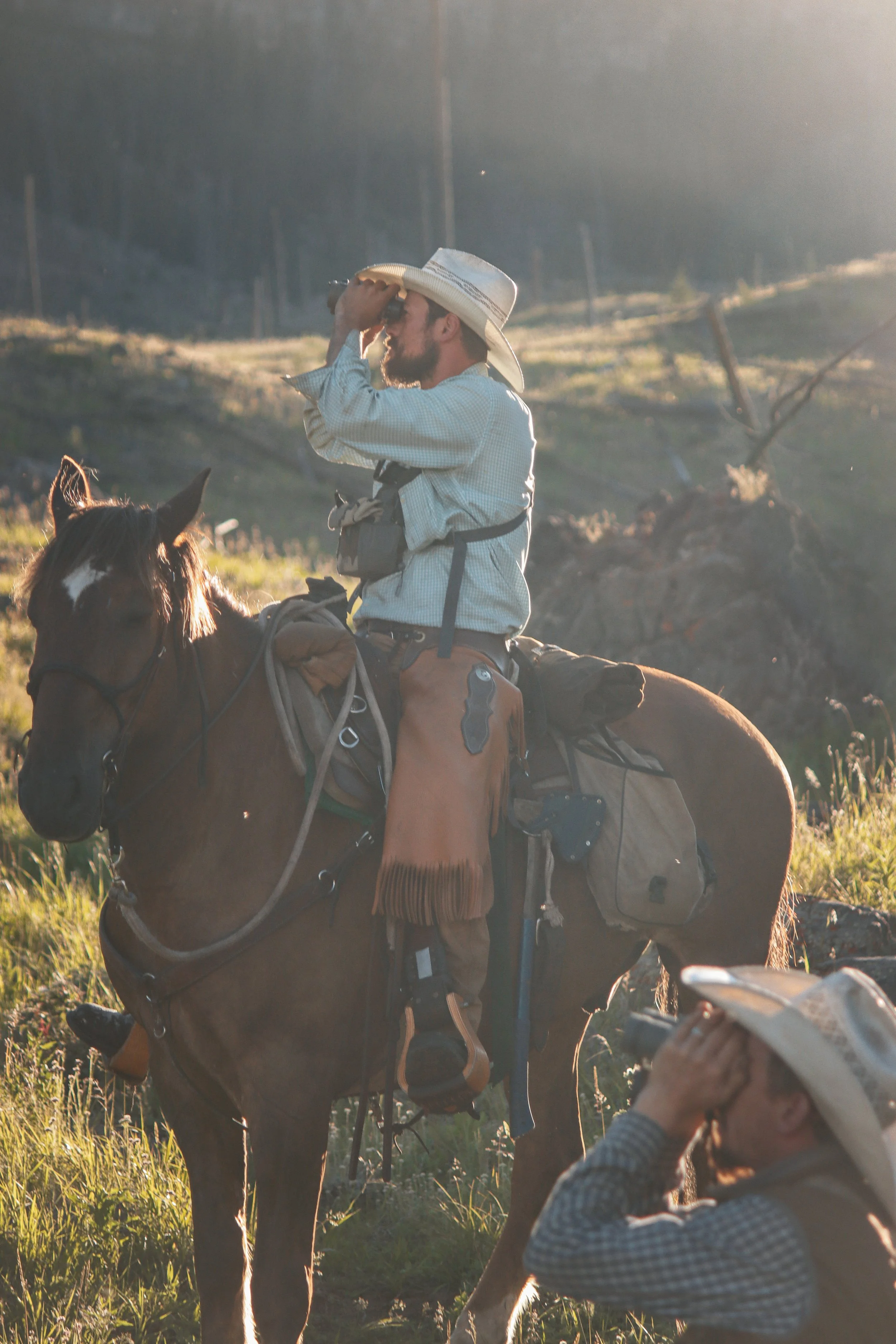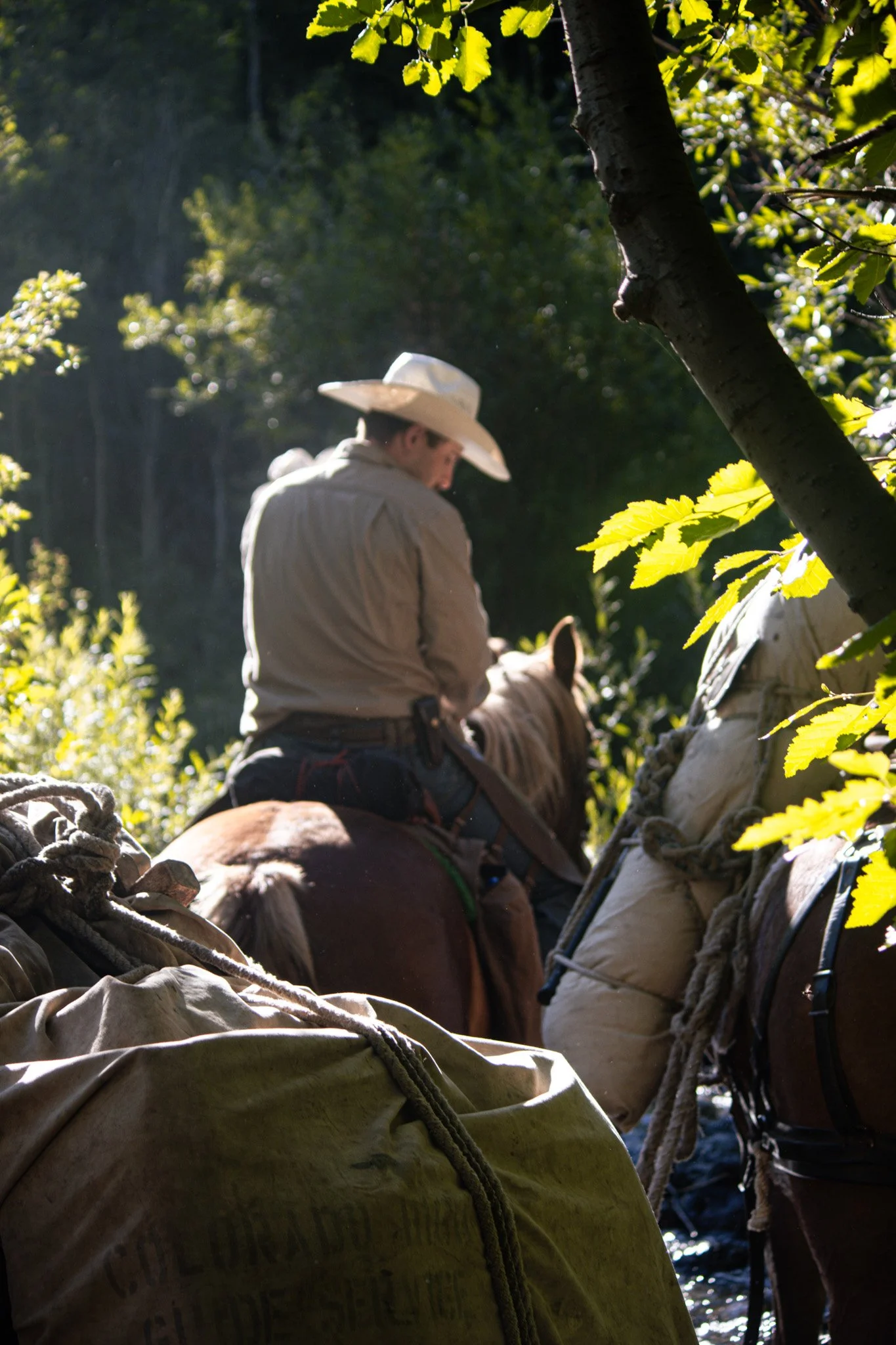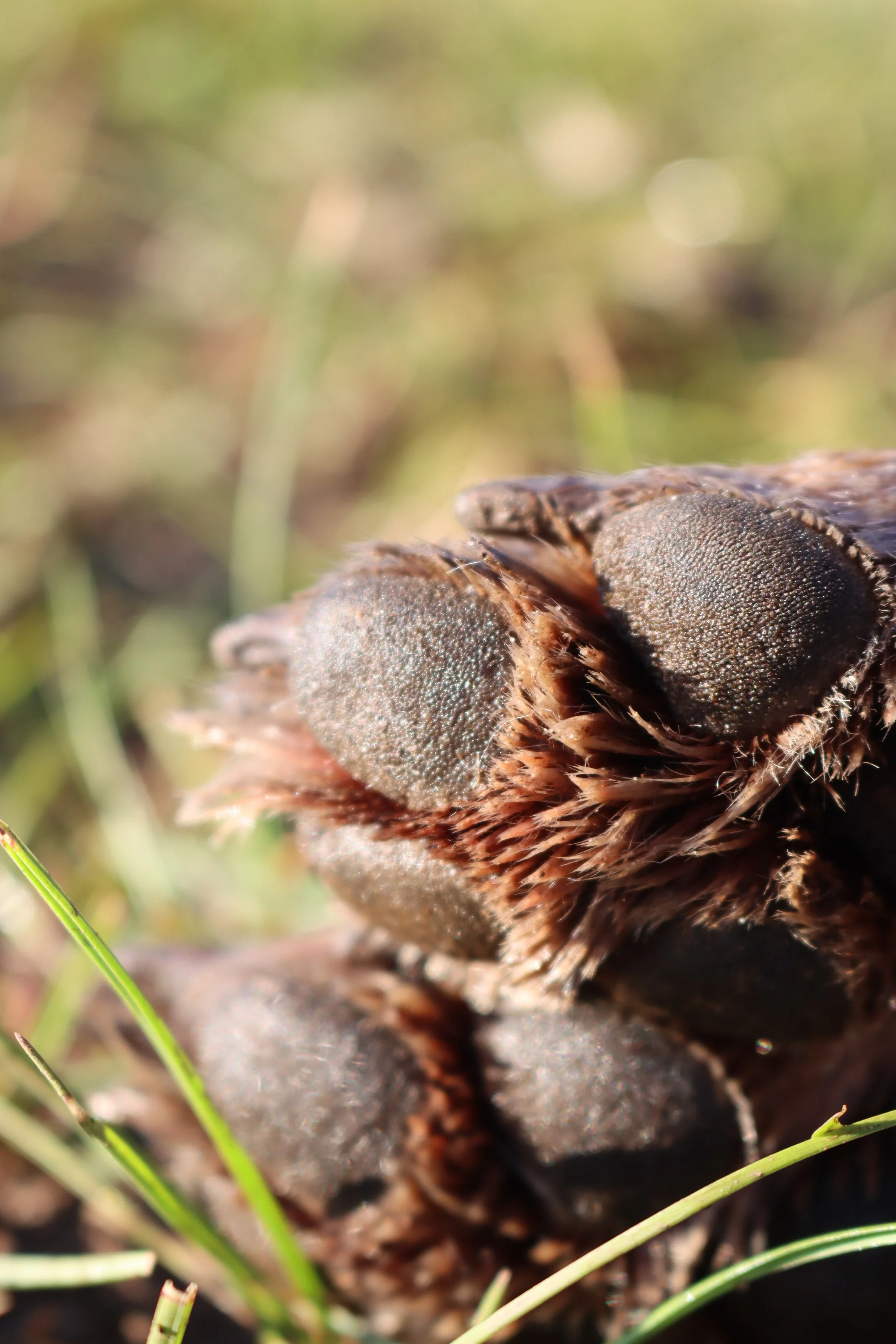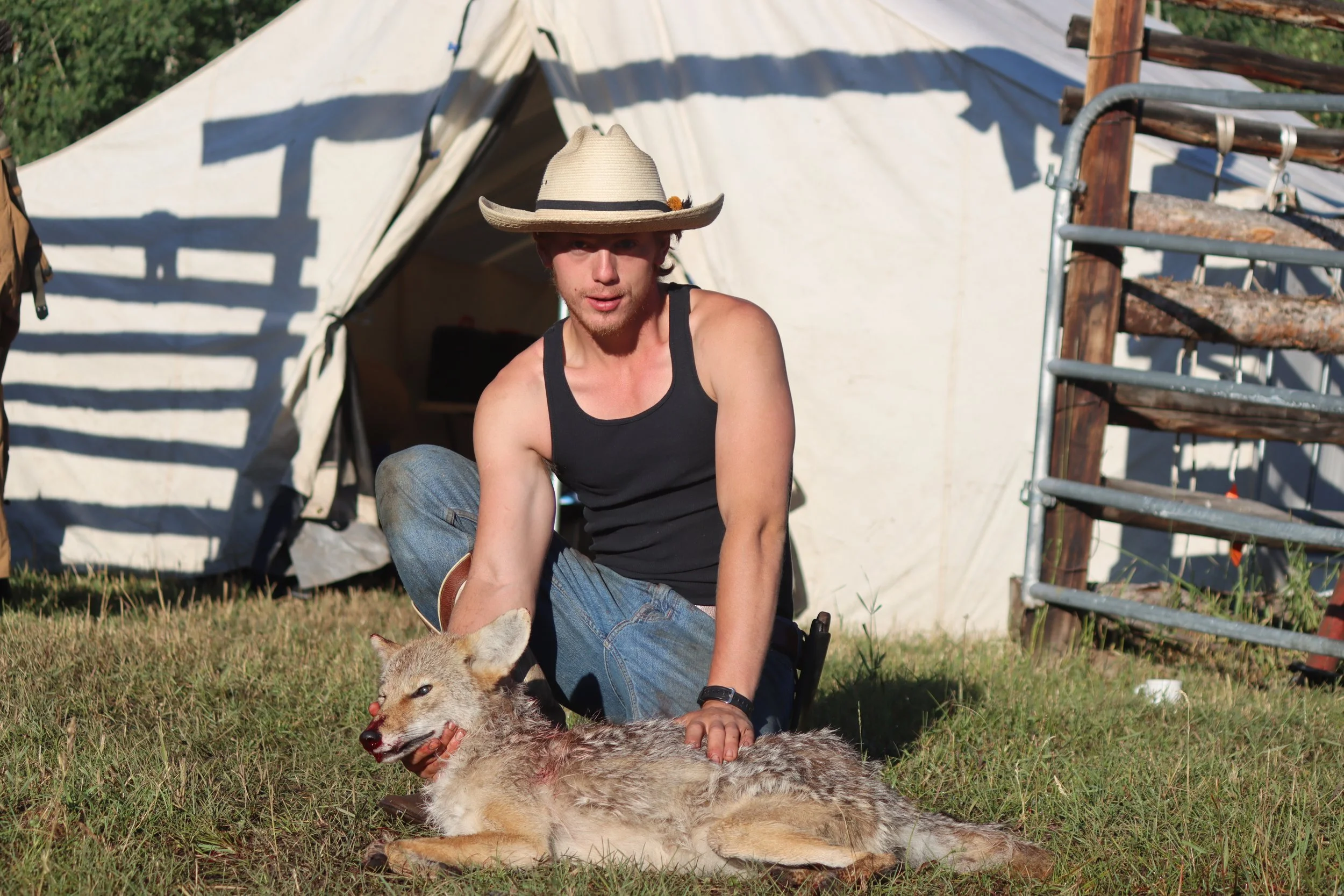A Kiwi in Colorado
The sky began its timeless shift, the milky dark breaking into a pale green. My eyes turned skywards, peering through the skeletal branches of fall aspens. Brilliant stars, were slowly melting away. I Spurred my horse forward, finding a tree to tie to, and dismounted. I helped my client off his horse and moved us to a nice glassing position. There we sat, the quiet breathing of two horses and a mule behind us. The cold stung my lungs. The dawn was not far away. In the darkness, a few hundred yards away, erupted the eerie howl of a coyote, and then another. They yipped and whined. A scattered pack of cunning canines calling to each other in the twilight. But even more distantly, on a far ridge, I could hear the mighty call of our quarry. A Piercing bugle, a bull elk.
Young people have the tendency to do things like gap years and that sort of thing, but not being content with being a school tutor or a barista in Europe, I thought I’d carve my own path. The mountains and valleys of distant lands were calling. North America, or more specifically the United States of America had many alluring environments and critters. So, with a substantial amount of planning and hustle, I found myself with plane tickets to the Rocky Mountains of Colorado. After thirty hours of airport misery, fuelled with Starbucks and chicken nuggets I found myself shaking hands with more or less a total stranger. Evan had endorsed my new position as a wilderness guide at the outfit I’d be working at. Coming from a land with no hunting seasons and a wealth of mountain hunting experience had made me a primo new employee to guide hunters. Mule packing and horse riding would be learned on the job. Over the next few weeks, I familiarized myself with my many new working companions, figured my way around horses and took to learning the ropes (quite literally, there was a lot of rope stuff involved in packing mules). Under the summer sun, with sweat seeping into my brand-new straw cowboy hat, I couldn’t help but smile. Pines, aspens, and the flat-topped mountains were on all sides. A kiwi lad, in a distant land of cowboys and mountain men.
The conservation system and management tactics of Colorado and the US, in general, are just a totally different world to NZ. I might be over-explaining but basically hunting in America is based on tags particular to every species, draws and OTC (over-the-counter). Basically, a nice way of explaining it, is that it limits the amount of species any particular person can shoot. It’s a system designed to limit the impact of high hunting pressure and more fragile native ecosystems. The Flat Tops Wilderness area is home to the largest elk herd in the US. Coming to Colorado I for sure expected hunting elk to be much like red deer, and in so many ways they are just about the same animal. But in a vastly different place. Most significantly in the harsh high-altitude winters that batter the Rocky Mountains with many feet of snow. Elk, deer and other ungulates have to retreat to lower altitudes during winter. The urban sprawl of Denver and other cities in the prairie lands has greatly decreased the wintering habitat of elk since the time of roaming Ute Indian tribes. Coyotes, black bears, bobcats, mountain lions and dudes with guns and bows ensure that the elk population never exceeds the land-carrying capacity. Dozens of different game units with specific regulations and annual differences in the number of hunting days keep this system balanced. I did say it was complicated. It’s a lot to take in for a Kiwi from little old New Zealand. America is often advertised as the land of freedom and opportunity. This is for sure true. But when it comes to mountain hunting, New Zealand finds itself in a unique opportunity, with introduced game animals and no carnivorous predators. We beat the Bald Eagles at their own game when it comes to freedom and hunting in the mountains.
It would be fair to say that the US hunter has put a much greater value on their game animals than a Kiwi one. Shooting a public land elk is a big deal. The very best hunters may have shot around 10-20 elk. A good deal of western hunters will take 5-6 years to shoot their first. The hunting is damn hard. It requires a lot more patience and local knowledge goes a lot further than fitness or hard yakka. Elk will either retreat to some deep deadfall-ridden hidey hole or private land, because of want and waste laws (the legal obligation of taking all four quarters, back steaks and tenderloins). You can't really hunt around willy-nilly without thinking of the logistics of packing the elk out to a trailhead. Which is kind of where I come in. The outfit I found myself in has 50 head of mules and horses (the American equivalent of a helicopter). To transport drop camp hunters and their gear to canvas wall tents in the mountains and pack out the mule deer, bears and elk they shoot in the wilderness. Come hunting season, I’d be guiding hunters myself, but in preparation for the season, there was a lot of track cutting and tent setting to do.
The weeks slipped by, when you're on a horse just about every day for two months you get pretty good pretty quickly. I was comfortable leading a string of mules and was getting to know my way around the many valleys and basins of our area. Setting up drop camps for hunters certainly wasn’t the highlight of this period but was interesting nonetheless. They aren't the internally framed canvas tents we so often use for the ballot tahr hunts here in New Zealand. These are 20-foot tents utilising pine poles and lashings. It needs to be strong enough to support two feet of snow later in the season and takes a whole team of guys to erect. While riding through the backcountry, leading mules packed with 60kg of gear. We’d run into moose, mule deer, elk and black bear. The lowlands are adorned in scrub oak and big aspen canopies. Which gives way to densely packed pine forests and alpine willow meadows. Every animal has been wandering the landscape for hundreds of thousands of years. The remnants of old Indian trails and hieroglyphs are still present on the landscape. New Zealand lacks the same kind of history. Māori have their own specific relationship with the land and were similarly affected by colonisation as native Americans. But being in a land where humans have existed for perhaps 80 thousand years, where mammoths, American lions, sabre-toothed cats and giant ground sloths once roamed has a bit of a different feeling than the eclectic mix of game animals we hunt in New Zealand. Aotearoa is a rugged newborn, spawned from volcanic and seismic turmoil. Our game animals have only been here just over 100 years. It’s a wild & free frontier, still being carved by fire and ice. A fertile land of potential. Colorado is older and more mature. It’s stacked with the history of ice-age beasts, Indians, mountain men and cowboys. Its frontier days have since passed but live on in the hearts of hunters and woodsmen. Regulation, conservation and bureaucracy have come in to preserve its wildness out of necessity. It is a privilege to experience that but also quite sad in a way. The urbanisation of a state like Colorado is slowly bleeding away the relationship with nature. Politics and urban points of view are clashing with the people working and utilising the land. Trapping is restricted to live capture. Lion and bear hunting are constantly under threat. Idealistic viewpoints are actually hurting conservation efforts. And the hunters there are fighting tooth and nail to protect it and their way of life. New Zealand is headed to the same situation, we just haven’t got there yet. Certainly, makes one appreciate what we have in the long white cloud.
This wouldn’t be an article if old Strider didn’t do some hunting while in this bizarre and perilous landscape. In New Zealand, we have a lack of predatory game species. So naturally I gravitated to a fascination with hunting coyotes, as they fall under a small game licence, which I could get very easily. My first foray into hunting them wasn’t very successful. Borrowing a rifle from a work buddy and a calling device that could mimic a dozen species. I set off a few evenings to try to locate coyotes without any luck. I’d walk the call out maybe 70 yards and turn it on, then retreat to a shooting position and basically wait. One night while on an expedition to set up the guided camp we’d be using later in the fall, I heard the distant yowls of a lone coyote. This time, I’d be successful. I woke early the next morning and followed the usual routine. But rather than use a rabbit distress call as I usually had, I switched the caller to the distressed whines of a coyote pup. The air was crisp and sandflies were unbearable as I sat in a mesh of aspen saplings. Within three minutes of sitting down, out stalked a coyote. Determined to find the source of the noise. I was taken aback at the speed of his appearance and purpose in his step. It didn’t take him long to get to the call and work out that something wasn’t right. I had barely got my rifle up when he spotted my movement and loped away, disappearing into a patch of willows. Had I lost my chance? Out he popped once more, looking over his shoulder curiously, he paused just long enough for me to settle a shot through a gap in the trees. With the crack of gunfire, the canine dropped on the spot. Now I am a big dog person, I hunt with my dog Kim all the damn time. So, walking up onto what is essentially a wild dog was a bit strange. I didn’t feel bad, coyotes are major predators of deer and elk fawns and need to be controlled for the sake of ungulates and for their own sake. I was fascinated and enamoured with him. The way he moved, his cunning and curiosity. To be the smallest predator in a land of lions and bears takes a great deal of street smarts. I’ve hunted with this animal before, I know how he thinks, I know how he moves on the landscape. He’s a predator like me and it was a pleasure to see him in the flesh. His amber eyes, long teeth and soft coat. I slung him on my shoulders and began the walk back to camp, excited to show the cowboys what a Kiwi lad can do.
























